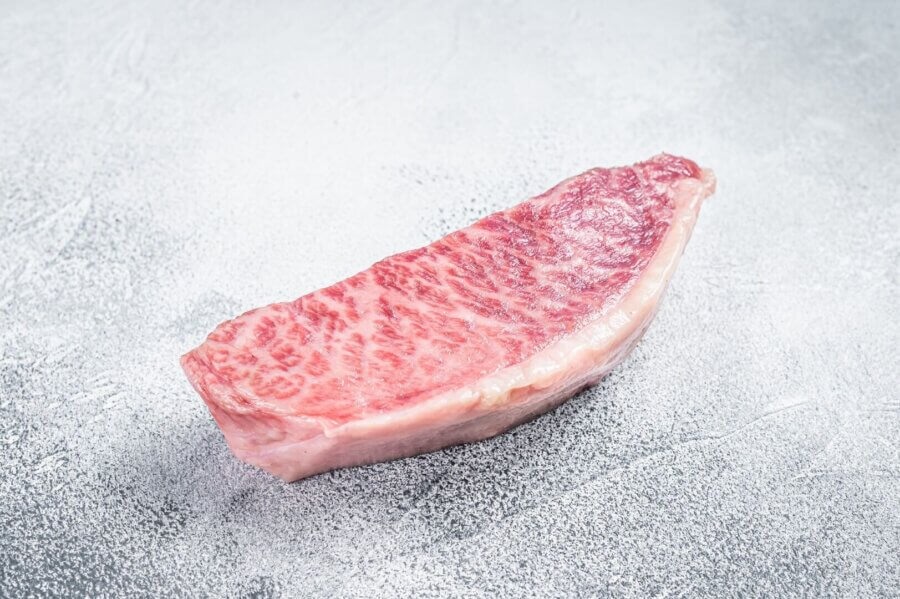The Japanese A5 Wagyu is renowned as the pinnacle of fine dining. This exceptional beef is famed for its sublime taste and tenderness, stemming from Japan’s long legacy of culinary refinement and meticulous butchery. More than just a meal, the A5 Wagyu personifies Japan’s dedication to quality and mastery in the culinary arts.
“Wagyu” means “Japanese cow”, although it signifies more than just that. It represents a unique breed of cattle, a specific way of raising and feeding them, and a distinct flavor that sets it apart from other beef types. Japanese A5 Wagyu, the highest Wagyu grade, has intense marbling throughout, a buttery-soft texture, and a flavor that is both rich yet delicate. It is a culinary gem greatly desired by food experts globally.
Wagyu cattle have a long history that shaped their prized status today. Understanding how they are raised and graded gives insight into what sets them apart. This guide offers knowledge for both experienced food lovers and those curious about Japanese cuisine. Wagyu cattle originated in Japan, where farmers perfected techniques over generations. Raising the cattle involves meticulous care of their health, diet and living conditions. This upbringing leads to the marbled fat that melts in the mouth.
The highest Wagyu grade is A5, denoting exceptional marbling. Reaching this level takes great skill from those tending the herd. Only the top one percent of beef qualifies for such an esteemed ranking. Those fortunate to sample A5 cut are in for an unparalleled taste experience like no other. While Wagyu costs more, its rich flavor and buttery texture earn this reputation. Learning its history shows why Japanese cattle demand premium prices.
Origin and Breed.
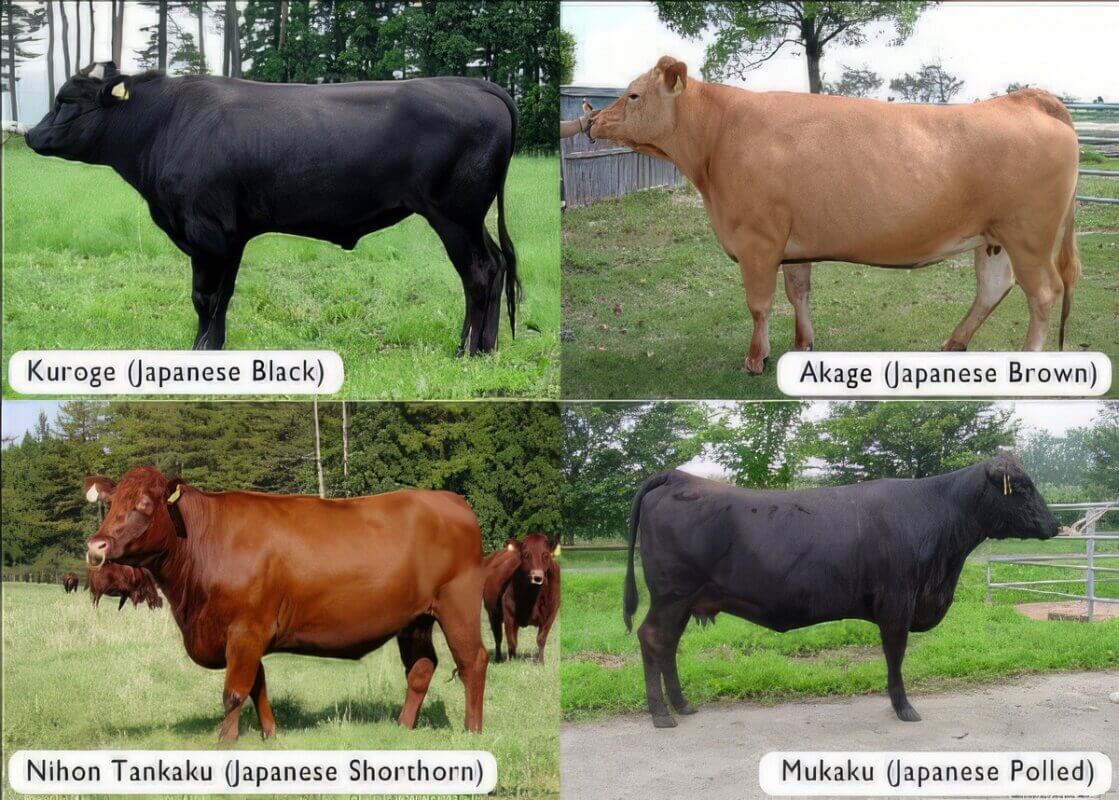
The Japanese cow breed known as Wagyu encompasses multiple unique varieties like Black, Brown, Shorthorn, and Polled. Each type boasts distinguishing traits that provide diversity and depth to the Wagyu breed. Especially renowned worldwide for creating sumptuous Japanese Wagyu beef is the Black strain exemplified by Tajima-Gyu. Its genetic line endows the cattle with qualities prized by beef connoisseurs.
The meticulous raising of Japanese Wagyu cattle results in beef of the highest caliber, connected to Japan’s long heritage and cultural esteem for livestock practices. Cattle cultivation is neither hasty nor hurried. Rather, it involves a thoughtfully selected diet abundant in grains within a stress-free setting. Consideration for every particular and dedication to the welfare of the herd guarantees the distinctive marbling and taste Japanese Wagyu beef is renowned for worldwide.
One of the prime examples of this is the Wagyu Kagoshima, which originated from the Kagoshima prefecture and is renowned for its exceptional quality. Kagoshima has rightly earned a reputation for top-tier Wagyu production, and the Wagyu Kagoshima demonstrates this. Its marbling, texture and taste that are superior directly come from the prefecture’s commitment to upholding the highest benchmarks in cattle raising.
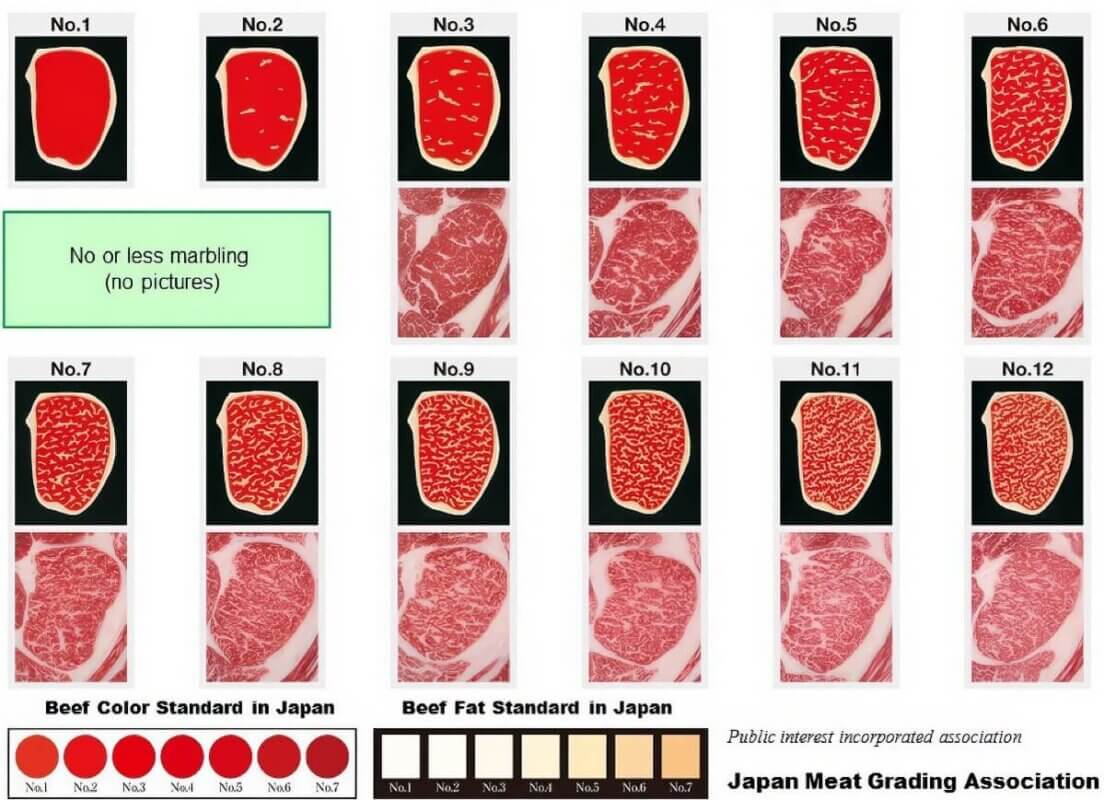
Japanese Wagyu beef undergoes a meticulous grading process administered by the country’s Meat Grading Association. They consider attributes like the distribution of fat within the muscle fibers, meat coloration, structure, feel, and the hue as well as luster of the fat. Cattle yielding cuts that boast ideal ratios of these qualifiers receive the highest possible scores.
The finest quality level on this grading scale is A5. This level is solely reserved for beef that surpasses the norm in every factor. The letter “A” represents outstanding yield, while “5” signifies the highest quality ranking, which implies exceptional marbling, meat hue, brightness, firmness, texture, and fat quality. Therefore, an A5 Japanese Wagyu beef is above all others.
Wagyu Grading table | |||||
| Grade | Marbling Score | Meat Color | Fat Color | Texture | Luster & Quality of Fat |
| A5 | 8 to 12 (very high to exceptional) | 3 to 5 (bright to very bright) | 3 to 5 (white to cream) | 3 to 5 (firm to very firm) | 3 to 5 (good luster and quality) |
| A4 | 6 to 8 (high to very high) | 2 to 4 (slightly bright to bright) | 2 to 4 (slightly yellow to white) | 2 to 4 (slightly firm to firm) | 2 to 4 (slight luster and good quality) |
| A3 | 5 to 7 (average to high) | 1 to 3 (dull to slightly bright) | 1 to 3 (yellow to slightly yellow) | 1 to 3 (soft to slightly firm) | 1 to 3 (poor luster and slight quality) |
| A2 / A1 | 1 to 4 (none to below average) | 1 to 2 (dull) | 1 to 2 (yellow) | 1 to 2 (very soft to soft) | 1 to 2 (no luster and poor quality) |
Please note that the grading system in Japan is very complex and involves a lot more detail than can be provided in this table. This is a simplified version to provide an overview.
Taste and Texture
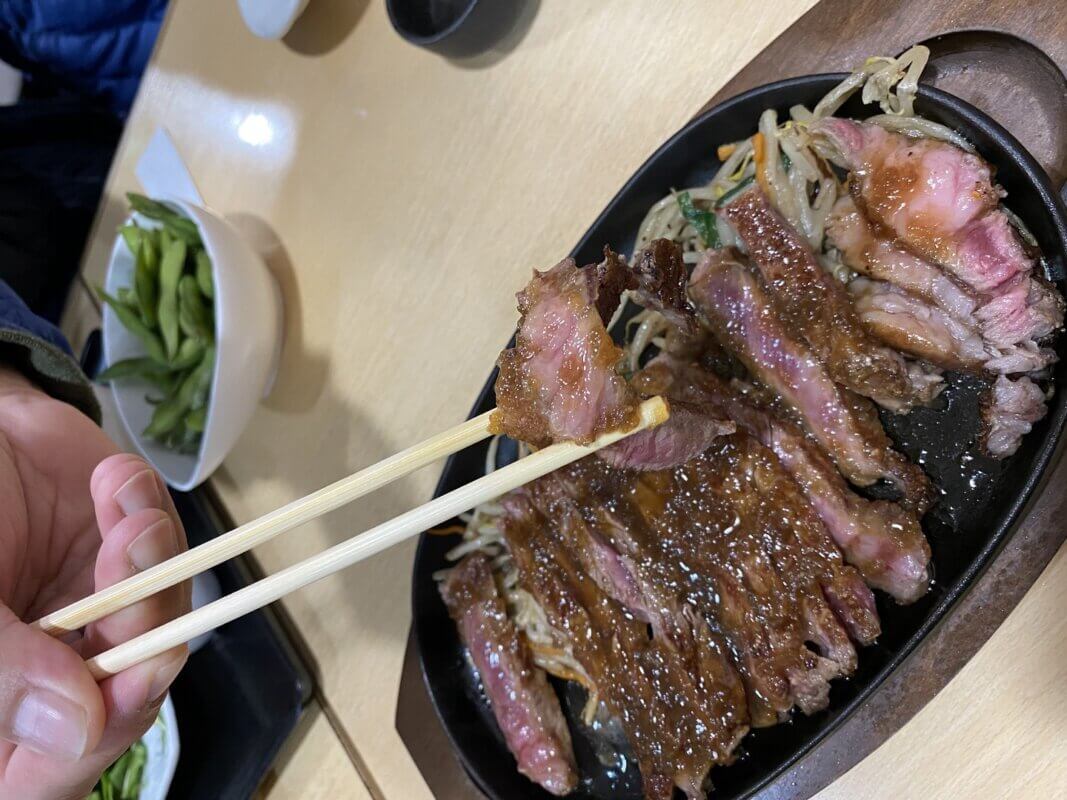
The sublime flavor and feel of elite Japanese A5 Wagyu cattle are genuinely unmatched. The beef’s main feature is its abundant marbling, giving it a special, rich, yet tender flavor. This marbled beef has lots of fat, giving it a texture that melts in your mouth, like fancy food art. This elevates the experience of an everyday meal to an exceptional dining event. No matter where the Wagyu comes from, its taste experience is truly amazing.
The fat within Wagyu cattle is important for more than looks or feel. It also greatly impacts taste. Much of the unique flavor of Wagyu comes from this fat. When cooking, the fat melts at lower heat. This allows the fat to blend with the meat. In turn, it gives the beef a soft texture and rich taste. This melting quality is what makes the very high grade A5 Wagyu so valued around the world by food lovers.
Hard Moreover, experiencing Wagyu is about more than just the beef. The way it’s cooked and served also matters. Traditional Japanese cooking includes grilling on teppanyaki and simmering in sukiyaki or shabu-shabu. These methods enhance beef flavor and texture. Each bite celebrates all the senses. Whether seasoned with just salt or part of a multi-course meal, Wagyu always stands out. The taste and texture are exceptional. Every meal provides an unforgettable experience.
Cooking Japanese A5 Wagyu
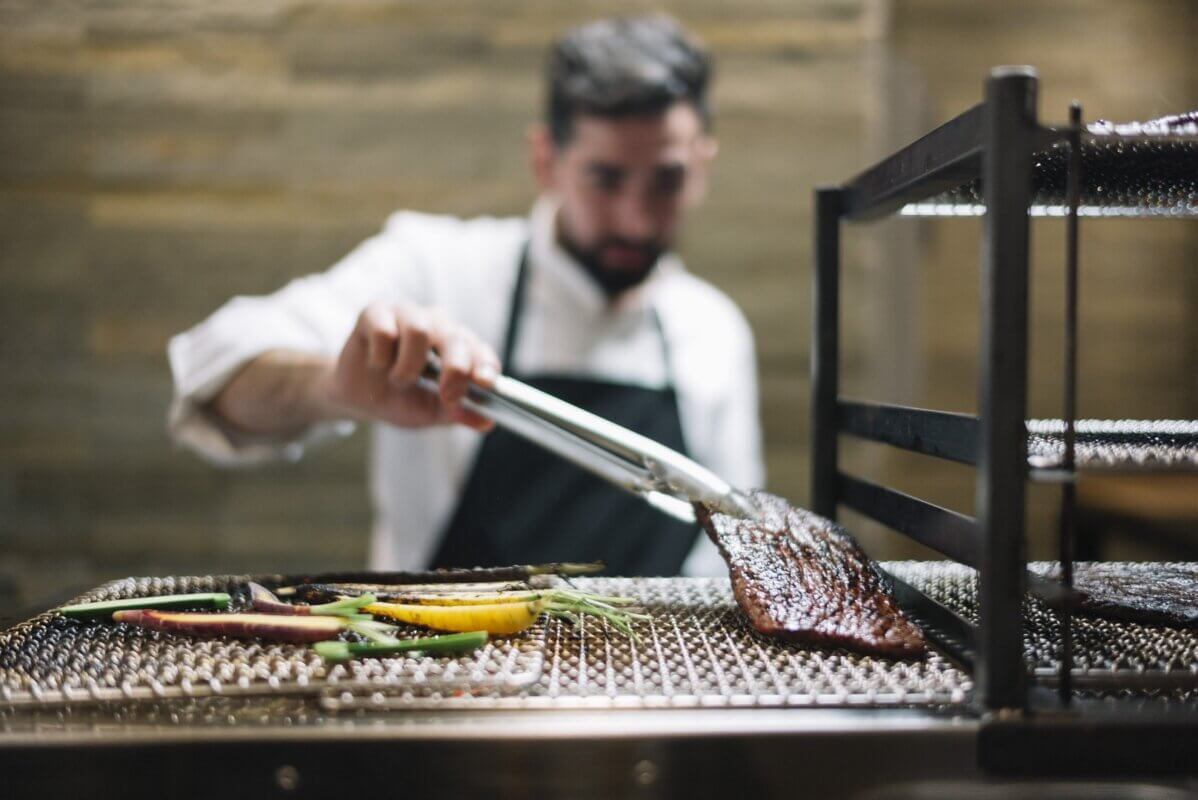
Cooking premium Japanese A5 Wagyu requires a light hand. This top-quality beef has such rich, robust flavor that only a light seasoning, usually just a sprinkle of salt, is needed before cooking. The typical preparation for A5 Wagyu involves searing it over high heat for only a brief time. This method permits the fat to melt and create a tasty crust while keeping the interior tender and succulent. To truly experience the meat’s unique qualities, it is commonly served sliced thinly rather than in thick steaks.
A typical error to stay away from when cooking top-grade Japanese A5 Wagyu is cooking it too much. Because of its significant fat content, the meat can rapidly turn excessive and lose its novel texture if left on the warmth for too lengthy. The objective is to bring out the beef’s natural tastes, not to hide them with overcooking. It’s best to prepare it briefly to preserve the uncommon marbling and tenderness that make this cut of beef so exceptional. A fast sear on the outside allows the fats to tenderly melt in while keeping the interior delicately warm and delicate.
It’s important to note that fat plays a key role in A5 Wagyu beef’s taste when cooking. The fat provides much of the flavor, so using high heat is important to gently release the fat as it cooks. This process contributes to the soft, tender texture famous for A5 Wagyu, allowing the fat to further enrich and deepen the beef’s natural taste.
Buying and Storing A5 Wagyu
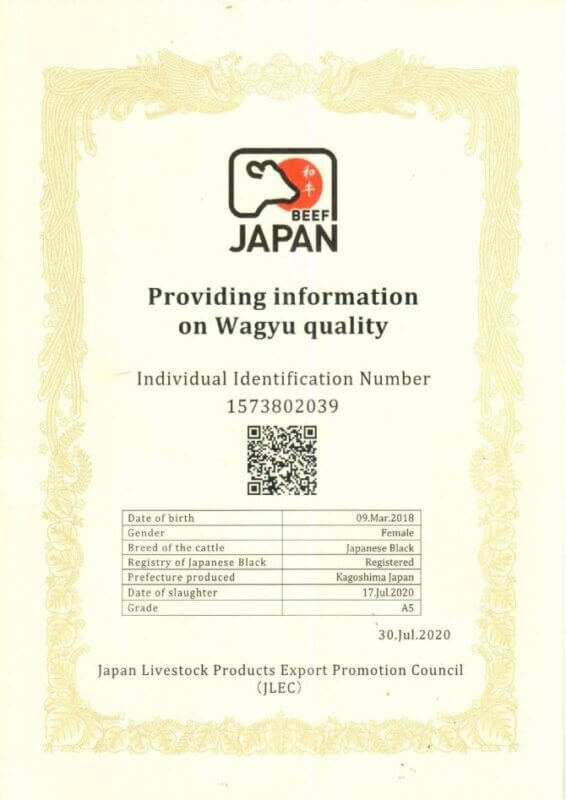
Being well-informed and careful is extremely important if you want to purchase real Japanese A5 Wagyu beef. One reliable method is searching for certifications and seals from the Japanese Meat Grading Association. These certificates guarantee the quality and source of the beef, helping set apart genuine Wagyu from fakes. It’s also very crucial to obtain from trustworthy merchants to stay away from counterfeit items.
Proper storage is important for keeping the taste and quality of A5 Wagyu beef. The meat should be placed in the refrigerator right away after buying it. Eating it soon thereafter will ensure the best flavor and tenderness. Refrigeration helps maintain freshness until consumption. Enjoying the beef promptly after purchase allows for full appreciation of its high quality.
Storing beef for an extended period requires proper freezing techniques to maintain quality. While freezing keeps meat safely for later use, it’s important to wrap beef carefully before freezing to avoid freezer burn that damages flavor. Using materials like freezer paper or vacuum sealing protects the delicate taste by providing an effective barrier from air during frozen storage.
If you want to eat the frozen Wagyu beef, it’s best to gradually thaw it in the refrigerator. This helps maintain its quality. A quick temperature change can impact the texture and taste of the beef. Slow thawing in the fridge allows it to safely defrost at its own pace, without getting too warm too fast.
Sustainability and Ethical Considerations
Raising premium A5 Wagyu cattle has long been a tradition, yet presents notable environmental and ethical issues. Growing these cows demands substantial resources, such as water and feed. Further, the methane gases from livestock have emerged as a pressing concern relating to beef farming’s environmental effect. While quality beef remains part of many diets, some explore ways to lessen the industry’s footprint through more sustainable practices.
While Japanese Wagyu beef farmers have faced criticism for their cattle’s high carbon footprint, many are taking steps toward more ecological farming. Specifically, they aim to optimize cattle diets needing less feed per pound of beef. By tweaking rations, they can boost efficiency while lessening environmental effects. A win-win as farmers and climate.
Furthermore, improved waste management practices are being adopted, such as transforming manure into farm compost and diminishing waste materials. These endeavors add to a circular economic system and assist in addressing the ecological issues linked with A5 Wagyu beef generation.
The well-being of Wagyu cattle is always the top priority in beef production. The cows are raised in a calm environment where they receive excellent care. This alignment with humane treatment not only meets ethical benchmarks but also noticeably enhances beef quality. Such sustainable methods are indispensable to making A5 Wagyu beef farming greener and more socially accountable.
Conclusion
Japanese A5 Wagyu is a distinctive culinary experience that moves beyond typical meals. Its taste, rich and creamy, and soft texture, coming from abundant marbling, make it unusual against other beef types. The art of readying A5 Wagyu is one of simplicity, permitting the natural richness and taste of the meat to glow through.
While shopping for high-quality beef, verifying certifications from the Japanese Meat Grading Association is important. This helps guarantee the item’s authenticity, and it is best to buy from reliable vendors. Proper storage is also key for maintaining the quality and taste of the beef, whether refrigeration or freezing is employed.
Producing high quality A5 Wagyu beef requires significant resources, so farmers have focused on more sustainable methods to lessen environmental effects. Producers now strive for feed to be used more efficiently and better handle byproducts. Cattle well-being remains important too, with the animals living comfortably without undue pressure. Their living conditions allow relaxation so health can be maintained. Farm work looks to balance productivity with minimizing footprint on land and air.
Japanese A5 Wagyu is a celebration of culinary mastery. Its creation follows long-held methods, yet adapts to environmental and moral values. As diners, we should appreciate not just the flavor and feel of A5 Wagyu but also the care, means, and customs that form each slice of this distinctive beef.
FAQ
What is Japanese A5 wagyu about beef?
It shows the best grade for excellent beef in Japan. It signifies great marbling, color, texture, and fat quality.
Why is A5 Wagyu so expensive?
The price shows how well the cattle are raised and the top-notch quality of the beef. It’s rare to reach the highest grade.
How does Japanese A5 wagyu taste?
Wagyu beef is famous for its rich, buttery flavor. It has a silky texture that melts in your mouth. It offers an indulgent eating experience. Its finely marbled flesh results in intense tenderness with each bite. Through generations of selective breeding, Wagyu cattle have been raised to produce .
What’s the best way to cook Japanese A5 wagyu?
Searing meat at a high temperature quickly is better. It makes the outside crispy and keeps the inside tender and juicy.
How can I ensure I’m buying genuine A5 beef?
When buying Wagyu beef, check for certifications from the Japanese Meat Grading Association. They assess the marbling and quality. Opt for sellers that are reputable and trusted to ensure you receive genuine Wagyu. The certification seals are your assurance of getting top-quality meat with a high mar .
How should A5 wagyu be stored?
The food item needs to be kept cold in the refrigerator and eaten soon after purchase. If needed, you can store it in the freezer. Please wrap it carefully to prevent freezer burn and preserve its delicate flavor. Consume it promptly once thawed.
What are the ethical considerations in producing A5 beef?
Manufacturing goods needs a lot of resources and impacts the environment. Manufacturers are increasingly using eco-friendly methods. For instance, farmers are enhancing feed usage and waste handling. They aim to utilize inputs efficiently and limit pollution, benefits we all share. Continuous refinement assists progress toward sustainability goals.
References:
- Japanese Meat Grading Association. (n.d.). Japanese Meat Grading Standard. http://www.jmi.or.jp/en/info/index2.html
- Watanabe, Y., Suzuki, K., & Gotoh, T. (2018). Genetic parameters for intramuscular fat percentage, marbling score, subcutaneous fat thickness, and feed efficiency traits in Japanese Black cattle. Journal of Animal Science, 96(2), 673-680.
- Pflanzer, S. B., & de Felício, P. E. (2011). Performance of three methodologies for cooking loss evaluation in low, medium and high marbled beef. Meat Science, 88(3), 448-453.
- Ozawa, S., Mitsuhashi, T., Mitsumoto, M., Matsumoto, S., Itoh, N., & Itagaki, K. (2000). The characteristics of muscle fiber types of longissimus thoracis muscle and their influences on the quantity and quality of meat from Japanese Black steers. Meat Science, 54(1), 65-70.
- Kagoshima Prefecture. Kagoshima Black. http://kagoshima-kuroushi.org
